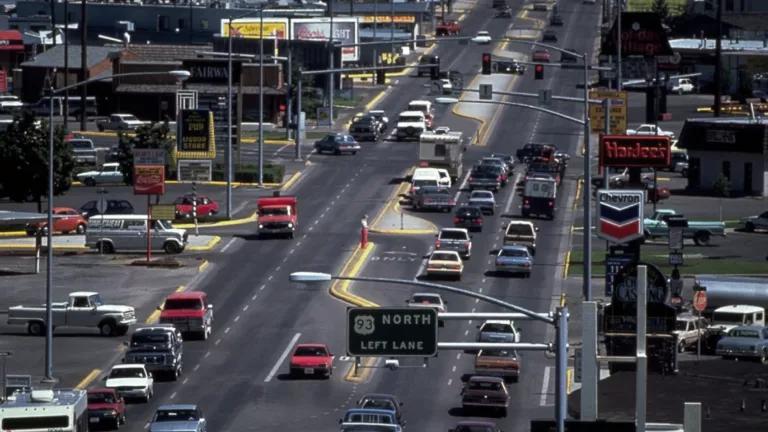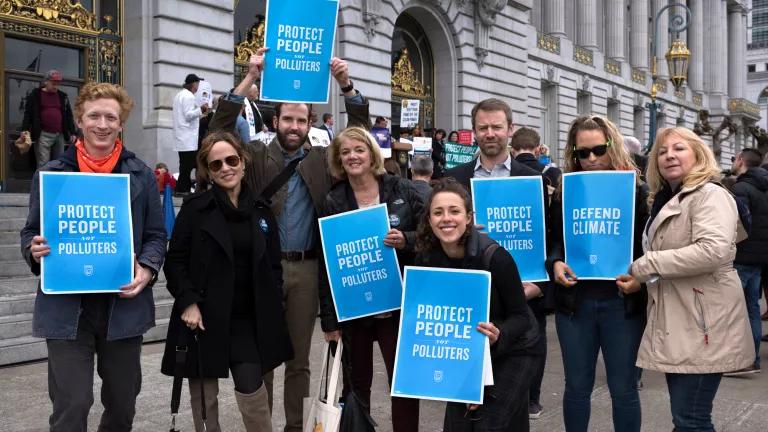Imagine fixing our crumbling infrastructure in ways that last. It can be done.

We usually don't talk as a nation about infrastructure. It's best when it's invisible. Literally, it is the structure-beneath-the-structure that supports our lives. Your job supports your family, but infrastructure -- power, water, transportation as well as social infrastructure like schools and the court system -- enables your job.
We expect our water to be clean, our lights to be on, our roads to be paved and our railroads to be comfortable, modern and safe. Infrastructure is not visible until something disastrous happens because of it.
No one wants to be stuck in traffic or in the subway, or worse, drive across a bridge or jump on a train and feel his or her life is at risk. It's a given that basic improvements are needed, but there is much more to the infrastructure discussion.
We need more infrastructure and it has to be better than what we are getting now.
Do you want to drive across that bridge or jump on that train if the laborers who built or fixed it are deliberately underpaid, or in a place where residents have been displaced so that the structures can exist or where flooding can wreak havoc during storms?
There is a growing movement out there to build and fund infrastructure in a way that doesn't just fix what breaks but that constructs cities and communities to make them safer and stronger for generations to come.
There's actually a new name for this approach -- it's called high road infrastructure.
Simply put, it's about moving away from this:
and towards this:

In the lower illustration, standards for human health and prosperity (new businesses and jobs), resilience to climate shocks and fortifying our natural resource base are front and center.
In the upper picture the only standard applied is expediency. There are no natural surfaces, only impenetrable pavement. There's a payday lender, a fast food restaurant, a bar, a gas station but no grocery stores, bike lanes or sidewalks. The safest place to be is in the steel shell of your car, not out walking or biking. There are no options for food or transport. No vegetation to absorb heat, capture rainwater or provide relaxation.
What's the best way to evaluate long-term infrastructure investments to support families, workers and businesses? Is it the sticker price today that matters most or the costs (and avoided costs) over the next 20, 30, 50 or 100 years?
Building infrastructure that lasts and is good for present and future generations needs to take environmental, social and economic viability issues into account. It needs to fix problems, yes, but also not create new ones. It needs to create equitable opportunities for us to lead fuller, healthier, safer, and lower cost lives.
It's really about planning for the lifetime of the project, looking ahead to adapt to the changes that are likely to occur, getting community engagement on priorities and making sure there's a mechanism in place over time that can maintain and support the infrastructure's safe operation.
I was at the White House recently talking about high road infrastructure for the Build America Investment Initiative. NRDC's Urban Solutions program, with the support of the Ford Foundation, is leading a multi-faceted expert working group on how we can get more high road infrastructure built in this country. During my talk I laid out our findings so far. Here's a sampling.
From up on the high road, it's easy to see what's down on the low -- selling assets to plug a budget gap, creating savings by forcing down wages, ignoring life cycle costs because of lack of current funding, not taking into account changing climate patterns, transforming places while displacing people.
The low road is not seeing synergies or connections between infrastructure investments -- for example, between energy efficient buildings and reduced asthma rates, between solar installations and jobs, or between the need to keep polluting rainwater runoff out of our waterways and the need in drought-stricken areas to collect rainwater for reuse.
The low road locks in dirty or outmoded technology and does not consider innovative technology or financing tools.
Taking the high road means building infrastructure that fulfills its core mission (e.g. managing water, breaking down waste, providing electricity, transporting people) and also achieves resilience (in the face of severe storms and drought), environmental benefits (less carbon and other pollution, more green space) and positive social outcomes (good jobs, quality affordable housing, access to work opportunities, ensuring that the healthiest choice is the easiest choice).
How do we travel the high road?
We use better tools and plans at all levels of government -- federal, state and local. We embed social, environmental and resilience standards in the design and evaluation of projects. We invite private sector innovation. We apply a resilience test to every dollar we invest. We track performance. We invest in operations and maintenance.
We increase capacity in government -- this means bandwidth and expertise. There are promising developments in this area, such as the capacity and tools being built by the EPA centers of excellence and the West Coast Infrastructure Exchange.
We improve markets with innovative public-private partnerships and new finance intermediaries like New York Green Bank and Connecticut Green Bank.
Of course, a big issue is funding and financing. The American Society of Civil Engineers estimates that the United States must invest $3.6 trillion by 2020 in basic infrastructure, including transportation systems, waterways, and the power sector -- and the current and projected spending rates will lead to a shortage of investment.
But there's a way to make that more forward-thinking and resilient as well.
New platforms are being created for some of the largest pools of capital -- pension funds -- to invest large amounts of reasonably priced long-term capital in high road projects.
Community development financial institutions like the Low Income Investment Fund and Enterprise Community Partners are starting to innovate around approaches to finance community scale infrastructure that is too small for many infrastructure investors.
Philanthropic and impact investors are playing a growing role, as are investors in the "green bonds" market.
Yes, we've had massive under-investment in infrastructure, and that needs to change. Let's take this opportunity to make that change in ways that don't undercut American workers, exacerbate climate change effects, rely on fossil fuels, displace and de-prioritize people or leave us vulnerable to big weather events.
Let's take the high road.




